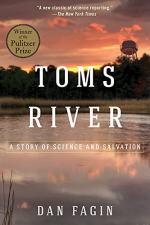|
This section contains 2,664 words (approx. 7 pages at 400 words per page) |

|
Summary
Fagin takes time in Chapter 14 to highlight the work of Theodor Boveri, a German biologist, who studied chromosomes in the early 1900s. During the same year that Yamigiwa was learning that cancer can be caused by prolonged exposure to certain chemicals, Boveri theorized that some people are genetically predisposed to cancer, and needed only the environmental agent to trigger it.
The two-hit cancer theory, created by an American scientist named Alfred Knudson, paired two different theories. Genetics was a growing discipline, and industrial toxins had been studied for years. Knudson said that a cell needs two “hits” to mutate and become cancer. One hit could be a genetic predisposition. The other would be a chemical in the environment.
This chapter also shows brief vignettes of some of the childhood cancer cases throughout the late 1980s and early 1990s. As Linda Gillick started...
(read more from the Section 3: Chapters 14-19 Summary)
|
This section contains 2,664 words (approx. 7 pages at 400 words per page) |

|




